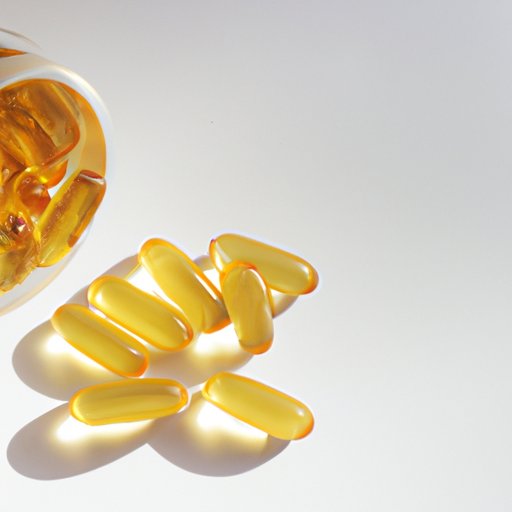
Introduction
Are you wondering if you can get Vitamin D in the shade? Many people are concerned about the amount of sun exposure they get and the potential risks of skin damage and cancer. Vitamin D is an essential nutrient that our body needs to maintain strong bones, healthy immune system, and overall health. However, getting enough Vitamin D can be challenging, especially if you live in areas with limited sunlight or spend most of your day indoors. This article will explore whether getting Vitamin D in the shade is possible, the risks of Vitamin D deficiency, and ways to maintain optimal levels of this nutrient.
What is Vitamin D?
Vitamin D is a fat-soluble vitamin that helps our body absorb calcium and phosphorus, both essential minerals for building and maintaining strong bones. In addition to bone health, Vitamin D plays a crucial role in regulating the immune system, reducing inflammation, and preventing chronic diseases such as heart disease, diabetes, and certain cancers. Vitamin D can be obtained naturally through sun exposure, or through foods such as fatty fish, egg yolks, and fortified dairy and cereals.
Can You Get Vitamin D in the Shade?
The answer is yes, but not as much as when exposed to direct sunlight. When our skin is exposed to the sun’s UVB rays, it triggers the production of Vitamin D in the skin’s oil glands. However, the amount of Vitamin D that our body can produce depends on various factors such as time of day, season, skin color, age, geographic location, and amount of skin exposed. In general, experts recommend getting 5-30 minutes of sun exposure per day, without sunscreen, during peak hours when the sun is highest in the sky. However, during these times, staying in the shade or wearing protective clothing and hats can still provide some benefits while reducing the risk of sunburn and skin damage.
Food Sources of Vitamin D
If obtaining enough sunlight is not possible, consuming foods that are high in Vitamin D can be a good alternative. Fatty fish such as salmon, tuna, and mackerel are excellent sources of Vitamin D, with one serving providing up to 100% of the daily recommended value. Egg yolks, mushrooms, and fortified orange juice, dairy, and cereals are also good sources of Vitamin D. However, it can be challenging to consume enough of these foods to reach the daily recommended intake of 600-800 IU (International Units) per day for adults.
Risks of Vitamin D Deficiency
Vitamin D deficiency is a relatively common health problem, especially in areas with limited sunlight and in people who follow a vegan or low-fat diet. Some of the symptoms of Vitamin D deficiency include fatigue, weakness, muscle pain, bone pain, and a weakened immune system. Over time, chronic Vitamin D deficiency can lead to more serious health conditions such as osteoporosis, rickets, and multiple sclerosis. It is essential to maintain optimal levels of Vitamin D to reduce the risk of these health problems and improve overall health and wellbeing.
Balancing Sunlight Exposure and Shade
While it may be tempting to avoid sunlight by staying indoors or in the shade, the reality is that our body needs sunlight exposure to produce Vitamin D. Spending too much time indoors can lead to Vitamin D deficiency and increase the risk of chronic health problems. At the same time, it is crucial to balance sunlight exposure with shade or protective clothing to reduce the risk of UV damage and sunburn. Try to aim for small amounts of unprotected sun exposure during peak hours, followed by staying in the shade or wearing protective clothing or hats when outdoors for extended periods.
Alternatives to Natural Vitamin D Sources
For people who live in areas with limited sunlight or are unable to spend time outdoors due to health reasons, there are alternatives to natural Vitamin D sources. Vitamin D supplements are widely available and can help maintain optimal levels of this nutrient. However, it is always best to consult with a healthcare provider to determine the appropriate dosage and type of supplement for your individual needs. Additionally, UV lamps or tanning beds can provide artificial sunlight exposure, but there are risks associated with these methods, and they are not recommended for everyone.
Importance of a Healthy Lifestyle
While getting enough Vitamin D is crucial for overall health, it is only one aspect of a healthy lifestyle. Maintaining a balanced and nutritious diet, staying physically active, getting enough rest, managing stress, and avoiding smoking and excessive alcohol consumption are essential for optimal health and wellbeing. By incorporating these healthy habits into your daily routine, you can optimize your Vitamin D levels and improve your overall health and quality of life.
Conclusion
In conclusion, it is possible to get Vitamin D in the shade, but not as much as when exposed to direct sunlight. Getting enough Vitamin D is crucial for maintaining strong bones, a healthy immune system, and overall health. In addition to sunlight exposure, consuming foods that are high in Vitamin D and taking supplements can help maintain optimal levels of this nutrient. By balancing sunlight exposure with shade or protective clothing, you can reduce the risk of UV damage and maintain optimal levels of Vitamin D. Remember that maintaining optimal Vitamin D levels is only one aspect of a healthy lifestyle that includes a balanced diet, regular exercise, and other healthy habits.





